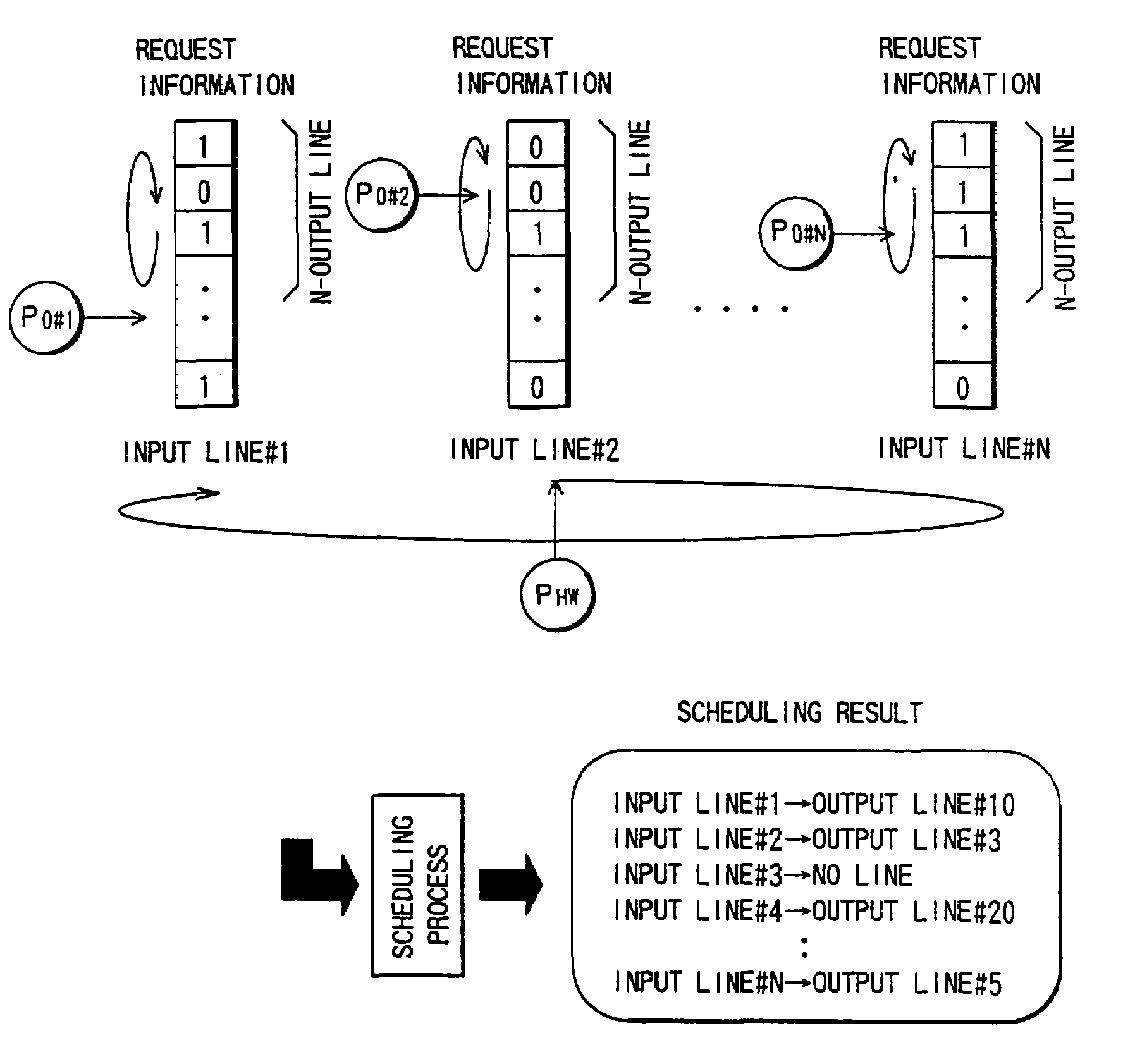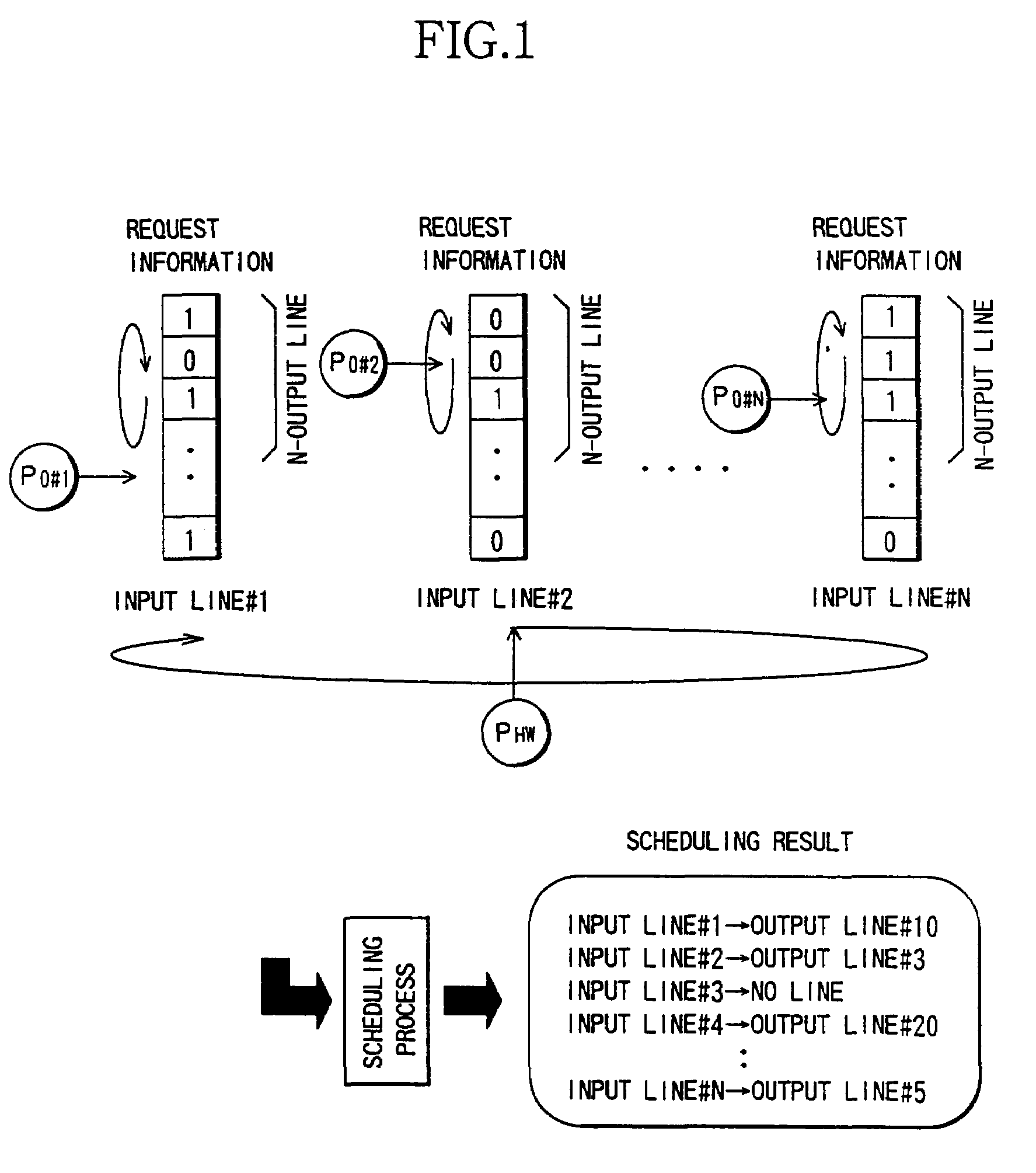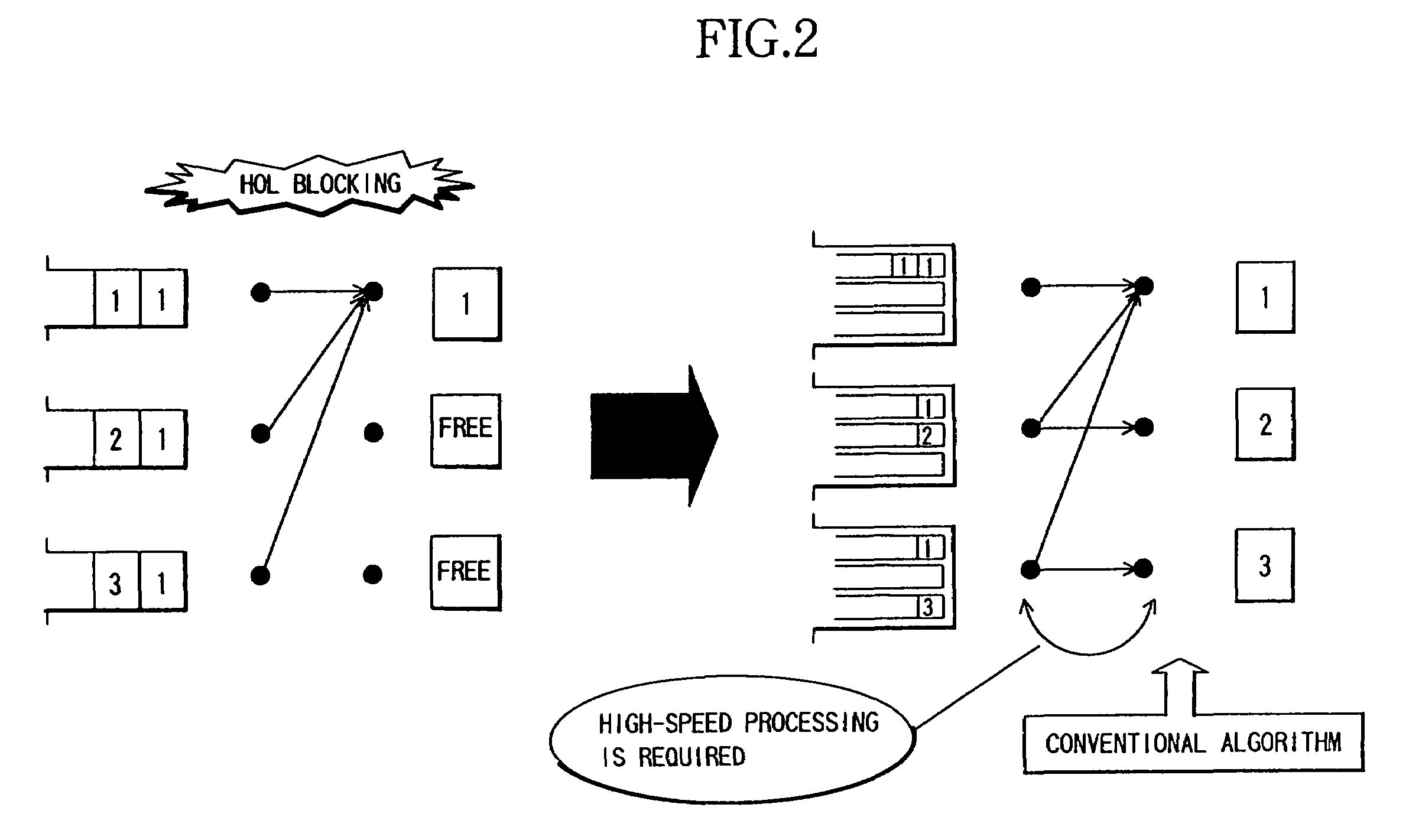Scheduling control system and switch
a control system and control switch technology, applied in the field of scheduling control system, can solve the problems of difficult hardware implementation, complicated logical operation, complicated arithmetic process, etc., and achieve the effect of speeding up processing
- Summary
- Abstract
- Description
- Claims
- Application Information
AI Technical Summary
Benefits of technology
Problems solved by technology
Method used
Image
Examples
embodiment 1
[0363]FIG. 38 shows one embodiment of a lowest number selection circuit illustrated in FIG. 15, wherein a white block indicates a selector circuit, and a screened block is constructed of two pieces of logic circuits for giving the following outputs X, Y with respect to inputs A, B.[0364]X=A or B[0365]Y=(A xor B) and B
[0366]This implies that X takes a logical sum of the two inputs, and Y is a logic for selecting a lower-numbered input, having “1”, of the two inputs. The following is one example of a table of truth value of the lower number selection logic.
[0367]
Input (A)Input (B)Output (Y)000011100110
[0368]One example of an operation of the lower number selection logic will be explained with reference to the circuit in FIG. 38.
[0369]In this embodiment, the mask-A (after an inter-highway pointer) described above is obtained in an upper half in the Figure, while the mask-B (before an intra-highway pointer) is obtained in a lower half in the Figure.
[0370]In the mask-A, a line number is ...
embodiment 2
[0444]FIG. 43 shows a whole architecture of the present system.
[0445]As illustrated in FIG. 43, in accordance with an embodiment 2, the cells arrived via the input lines are held by the input buffers, then inputted to an (N×N) configured switch by an indication given from the scheduler, and outputted from N-lines of output lines.
[0446]Herein, inversion control of the inter-highway pointer will be explained referring to FIG. 44. A (4×4) configured switch is assumed in FIG. 44.
[0447]Referring again to FIG. 44, the scheduling of the first time starts with the input line #0 and is performed in sequence such as the input lines #0, #1, #2 and #3.
[0448]If the scheduling proceeds in the sequence in only one direction, the inter-highway pointer shifts second time in the forward direction, and the scheduling proceeds in sequence such as #2, #3, #0, #1 starting from the input line #2. Herein, when considering the scheduling sequence with an emphasis upon the input lines #0 and #1, a larger qua...
embodiment 3
[0451]An embodiment of a pipeline processing system using the inversion control explained above, is hereinafter be described.
[0452]The configuration of the 4×4 switch has been exemplified in the embodiment 2, the four input lines may be scheduled within a 1-packet time. If accommodating a larger number of lines, however, it is difficult to finish the processing of all the lines within the 1-packet time.
[0453]Such being the case, the pipeline processing architecture is structured by shifting in time the scheduling start input line, thereby avoiding a problem in terms of a processing speed. This is how the present embodiment is.
[0454]FIG. 45 shows a pipeline sequence. A start number of each pipeline deviates in time, whereby a contention is hard to occur. The numerals in the Figure indicates the serial numbers of the scheduling target input lines. In this example, the scheduling of the two lines is executed within the 1-packet time. Then, the scheduling is structured so that the sched...
PUM
 Login to View More
Login to View More Abstract
Description
Claims
Application Information
 Login to View More
Login to View More - R&D
- Intellectual Property
- Life Sciences
- Materials
- Tech Scout
- Unparalleled Data Quality
- Higher Quality Content
- 60% Fewer Hallucinations
Browse by: Latest US Patents, China's latest patents, Technical Efficacy Thesaurus, Application Domain, Technology Topic, Popular Technical Reports.
© 2025 PatSnap. All rights reserved.Legal|Privacy policy|Modern Slavery Act Transparency Statement|Sitemap|About US| Contact US: help@patsnap.com



